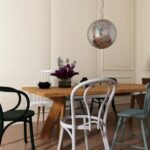Are you wondering how to decorate your split level home? Split level homes are a unique architectural style that presents both challenges and opportunities when it comes to decorating. With multiple levels and distinct design features, it’s important to approach the decor with creativity and strategic planning. In this article, we will explore the best ways to enhance the beauty of your split level home through thoughtful decorating choices.
When it comes to split level homes, understanding the layout, natural light, and existing decor is essential for creating a cohesive and harmonious space. In this article, we will provide tips for assessing your space and determining the best decorating approach based on these factors. Additionally, we will delve into creative ideas for incorporating each level of your home into the design, along with strategies for maximizing natural light and making transitions between levels seamless.
Selecting furniture and decor that complements the distinct design of a split level home is crucial for achieving a stylish and functional living environment. We will offer advice on choosing the right furniture pieces, color schemes, paint colors, and cohesive design elements to tie together the different levels of your home.
Furthermore, we will also explore how to extend your decorating efforts to outdoor spaces by providing landscaping tips and suggestions for creating inviting outdoor living areas. So if you’re ready to transform your split level home into a stunning showcase of personalized style, keep reading for expert advice on how to make the most of this unique architectural gem.
Assessing Your Space
When it comes to decorating a split level home, it is important to first assess the space you have to work with. This type of home often presents unique challenges and opportunities that require careful consideration. By evaluating the layout, natural light, and existing decor of your split level home, you can determine the best approach for decorating each area.
Layout Evaluation
Take the time to carefully assess the layout of your split level home. Consider how each level flows into the next and where the main living areas are located. Determine if there are any awkward or underutilized spaces that could benefit from creative decorating solutions. Understanding the layout of your home will help you make informed decisions about furniture placement and design choices.
Natural Light Assessment
One of the advantages of split level homes is that they often feature an abundance of natural light due to their unique architectural design. Evaluate how natural light enters different levels of your home throughout the day. This will guide you in making decisions about window treatments, wall colors, and furniture placement that maximize the light while also providing privacy and comfort.
Evaluating Existing Decor
Take stock of your current decor to see what can be integrated into your new design scheme. Assess which pieces still work well with the aesthetic you want to create and identify areas where updates or replacements are necessary. This will give you a clear starting point for planning new additions and alterations that seamlessly blend in with your existing decor.
Utilizing Different Levels
One of the key features of a split level home is, as the name suggests, the multiple levels that make up this type of architectural design. When it comes to decorating such a space, it’s essential to consider each level individually while also ensuring a cohesive flow throughout the entire home.
To incorporate each level into your design, consider using different flooring materials or area rugs to define specific areas within each level. For example, hardwood flooring in the living room area can transition seamlessly into a tile or carpeted area that designates another part of the home. Additionally, using different colors or textures on walls can help create visual separation between levels while also tying everything together.
Another creative way to integrate each level into your split level home’s design is through lighting. Strategic placement of lights at various heights and angles can highlight different areas while also providing continuity in the overall aesthetic. Whether through wall sconces, pendant lights, or recessed fixtures, thoughtful lighting choices can enhance transitions between levels and contribute to the overall ambiance.
Incorporating functional elements like built-in storage or shelving units can also serve a dual purpose by not only providing practical solutions for organizing items but also acting as natural dividers between levels. These elements offer both aesthetic appeal and functionality while contributing to a seamless transition from one level to another within your split level home.
| Decoration Idea | Description |
|---|---|
| Different Flooring Materials | Incorporate hardwood flooring in some areas and use tile or carpet in others. |
| Strategic Lighting | Place lights at various heights and angles to highlight different areas. |
| Built-In Storage | Utilize built-in storage or shelving units as natural dividers between levels. |
Maximizing Natural Light
Decorating a split level home comes with its own set of challenges and opportunities, especially when it comes to maximizing natural light. The unique architectural design of a split level home often means that there are varying levels of natural light in different areas of the house. However, with the right strategies, you can capitalize on the natural light in your split level home and enhance its overall ambiance.
Assessing Natural Light Levels
Before embarking on decorating your split level home, it’s crucial to assess the natural light levels in each area. Take note of which rooms receive ample sunlight throughout the day and which areas may be lacking in natural light. This will help you determine where to focus your decorating efforts to make the most impact.
Strategic Use of Mirrors
Mirrors are an excellent way to maximize natural light in any home, but they can be particularly effective in a split level home. Placing mirrors strategically across from windows or other sources of natural light can help reflect and amplify the light throughout the space, making it feel brighter and more inviting.
Lightweight Window Treatments
When selecting window treatments for your split level home, opt for lightweight options that allow plenty of natural light to filter through. Sheer curtains or blinds can provide privacy while still allowing sunlight to fill the room. Avoid heavy drapes or opaque coverings that may block out precious natural light from entering your living spaces.
By strategically assessing natural light levels, utilizing mirrors, and choosing lightweight window treatments, you can successfully capitalize on the unique architectural features of your split level home and create a bright and welcoming atmosphere for you and your family to enjoy.
Choosing Furniture and Decor
When it comes to decorating a split level home, selecting the right furniture and decor is crucial in enhancing the unique design of the space while maximizing both functionality and space. Here are some tips for choosing furniture and decor that complements the distinct design of a split level home:
1. Consider the layout: Evaluate the layout of each level in your split level home to determine the best placement for furniture. Keep in mind that each level may have its own purpose, so choose furniture that suits the function of each area, whether it’s a cozy seating area on the lower level or a formal dining space on the upper level.
2. Embrace open-concept design: Split level homes often feature open-concept layouts, so select furniture and decor that enhance this architectural feature. Opt for sleek, low-profile furniture that creates an airy feel and allows for seamless flow between different levels of the home.
3. Maximize storage options: With multiple levels in a split level home, it’s important to make the most of available space for storage. Choose multifunctional furniture pieces with built-in storage options such as ottomans with hidden compartments or modular shelving units to keep clutter at bay and maintain a neat and organized living space.
By carefully choosing furniture and decor that complement the unique design of a split level home while also maximizing space and functionality, you can create a stylish and functional living environment that embraces its architectural features.
Color Scheme and Paint
When it comes to decorating a split level home, choosing the right color scheme is crucial for enhancing the flow and overall aesthetic of the space. The unique layout of a split level home means that each level may have its own distinct purpose, and the right color scheme can help define these areas while also tying them together cohesively.
When selecting a color scheme for your split level home, consider the natural light in each area, as well as the existing decor and architectural features.
One important tip for choosing a color scheme for a split level home is to create a sense of continuity and flow throughout the different levels. While it’s perfectly fine to use different colors in each area, selecting hues that complement each other can create a harmonious transition from one level to another. For example, if your lower level has warm earthy tones, consider incorporating accents of those colors on the upper levels to create visual connection.
Another aspect to consider when choosing a color scheme for your split-level home is how different paint colors can affect the perception of space. Lighter colors can make smaller areas feel more spacious and airy, while darker shades can add coziness and intimacy to larger rooms. In spaces with limited natural light, opting for lighter paint colors can help maximize brightness and create an open feel.
On the other hand, rooms with ample sunlight can benefit from warmer or deeper hues that add depth and dimension to the space. By carefully considering the impact of paint colors on different areas of your split level home, you can create a balanced and visually appealing environment throughout all levels.
Creating Cohesion
Decorating a split level home can present unique challenges when it comes to creating a cohesive look throughout the different levels. However, with the right techniques and design elements, you can tie together the distinct areas of your home to create a harmonious and inviting living space. Here are some tips for creating cohesion in your split level home:
- Consistent Color Palette: Choose a consistent color palette that flows throughout the different levels of your home. This doesn’t mean that every room needs to be painted the same color, but selecting complementary hues and coordinating accent colors can help create a sense of unity.
- Coordinating Design Elements: Incorporate design elements that tie together the different levels of your home. Whether it’s using similar flooring materials, coordinating window treatments, or repeating certain architectural details, finding common design elements can help create a cohesive look.
- Artwork and Accessories: Use artwork and accessories to create visual connections between the different levels of your split level home. Consider hanging complementary pieces of artwork or incorporating similar decor items throughout the space to tie everything together.
By implementing these techniques, you can create a sense of cohesion in your split level home, making it feel like a unified and well-designed living space. Remember that creating cohesion doesn’t mean everything has to match perfectly; rather, it’s about finding ways to connect the different areas of your home through thoughtful design choices.
Outdoor Spaces
In conclusion, decorating a split level home offers unique challenges and opportunities that can be addressed with careful planning and creative design. By assessing the layout, natural light, and existing decor of your space, you can determine the best approach to enhance its architectural features. Utilizing different levels in your design and making transitions seamless can create a cohesive and visually appealing look throughout the home.
Maximizing natural light is key in decorating a split level home, as it can highlight its unique architectural features and make the most of its distinct design. Choosing furniture and decor that complement the layout of the home while maximizing space and functionality is essential for achieving a balanced and well-designed interior.
Furthermore, tying together different levels of the split level home with cohesive design elements, artwork, and accessories can create a sense of unity throughout the space. Additionally, extending decorating efforts to outdoor areas by incorporating landscaping tips and creating inviting outdoor living spaces will further enhance the overall appeal of your split level home.
With careful consideration and attention to detail, decorating a split level home can result in a beautifully designed space that maximizes both its architectural features and functionality.
Frequently Asked Questions
How Can I Make My Split Level House Look Better?
There are several ways to improve the appearance of a split-level house. One option is to update the exterior by adding landscaping, painting the exterior, or replacing old windows and doors.
Inside, you can consider removing or updating any dated design elements, such as wood paneling or shag carpeting. Additionally, opening up interior spaces to create a more open floor plan can help modernize the look of a split-level home.
Why Are Split Level Homes Harder to Sell?
Split-level homes can be more challenging to sell because they often have unique layouts that may not appeal to all potential buyers. The different levels can make it difficult for some people to envision the flow of the space and how they would use it.
Additionally, some buyers may not like the feeling of being “split” from other living areas in the home.
Are Split Level Homes Outdated?
While split-level homes were popular in the mid-20th century, they are starting to become less common in newer home construction. However, this doesn’t necessarily mean they are outdated – many homeowners appreciate the individuality and character of split-level homes.
With some updates and modernization, a split-level home can still be an attractive option for buyers looking for something different from traditional two-story homes.

I’m thrilled to be your companion on this exciting journey through the world of home decor and design. With a passion for turning houses into homes and a keen eye for the finer details, I’m here to help you transform your living spaces into beautiful, functional, and meaningful havens.





